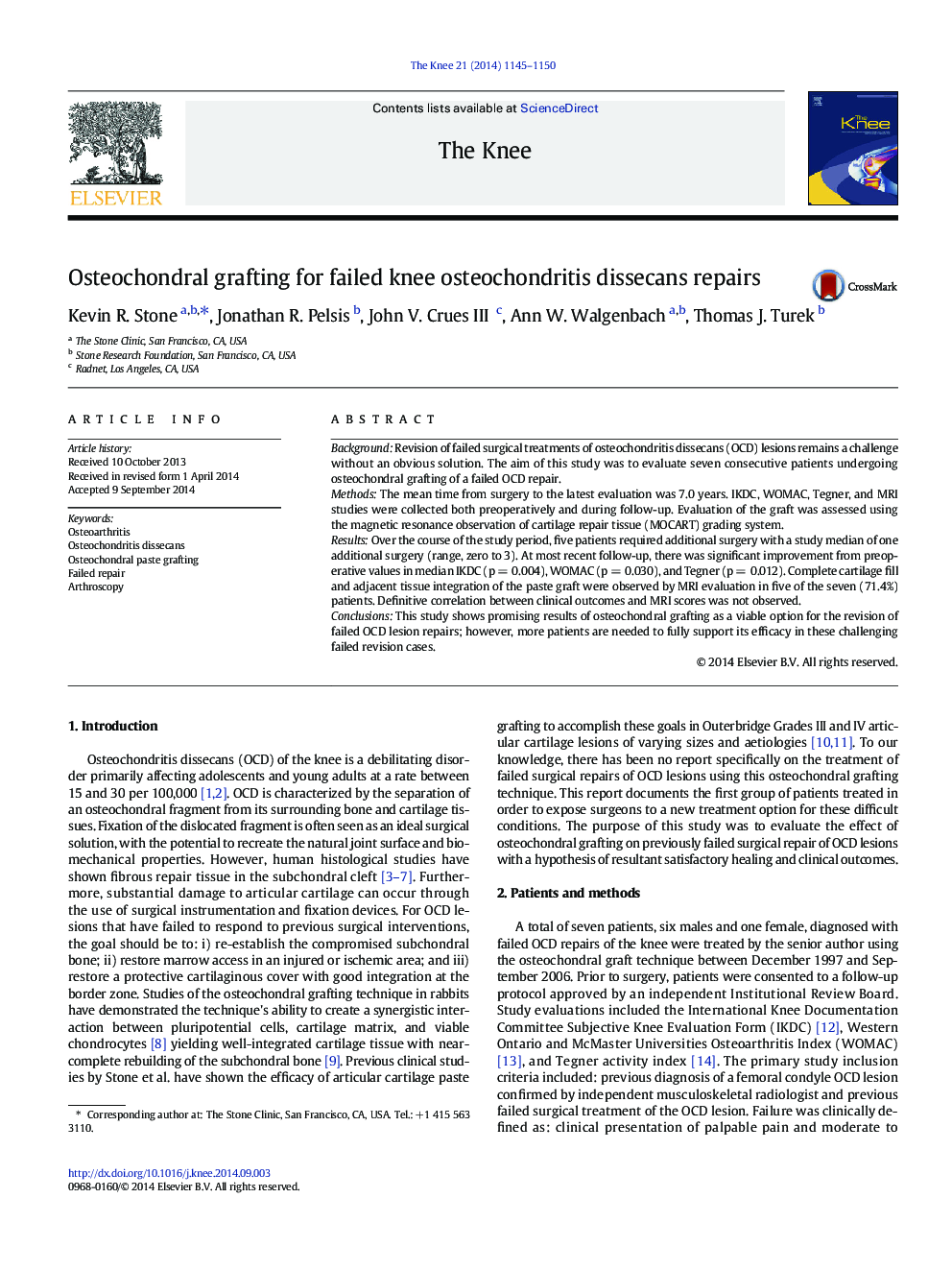| Article ID | Journal | Published Year | Pages | File Type |
|---|---|---|---|---|
| 6211346 | The Knee | 2014 | 6 Pages |
â¢We evaluate seven patients undergoing osteochondral grafting of a failed OCD repair.â¢MRI showed restored surface tissue with abnormal subchondral signal.â¢Patient median pain, activity, and function levels showed significant improvement.â¢MOCART score did not correlate with subjective outcome measures.â¢Osteochondral grafting shows promise as a viable option for the revision failed OCD repairs.
BackgroundRevision of failed surgical treatments of osteochondritis dissecans (OCD) lesions remains a challenge without an obvious solution. The aim of this study was to evaluate seven consecutive patients undergoing osteochondral grafting of a failed OCD repair.MethodsThe mean time from surgery to the latest evaluation was 7.0 years. IKDC, WOMAC, Tegner, and MRI studies were collected both preoperatively and during follow-up. Evaluation of the graft was assessed using the magnetic resonance observation of cartilage repair tissue (MOCART) grading system.ResultsOver the course of the study period, five patients required additional surgery with a study median of one additional surgery (range, zero to 3). At most recent follow-up, there was significant improvement from preoperative values in median IKDC (p = 0.004), WOMAC (p = 0.030), and Tegner (p = 0.012). Complete cartilage fill and adjacent tissue integration of the paste graft were observed by MRI evaluation in five of the seven (71.4%) patients. Definitive correlation between clinical outcomes and MRI scores was not observed.ConclusionsThis study shows promising results of osteochondral grafting as a viable option for the revision of failed OCD lesion repairs; however, more patients are needed to fully support its efficacy in these challenging failed revision cases.
